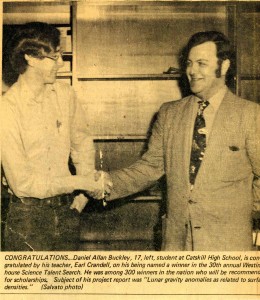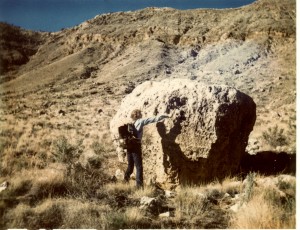How the moon landings still impact my photography
Click image to enlarge
Growing up, my eyes were always fixed on the moon.
That was where the space program was headed through my entire childhood, and that was where I’d planned to be. I knew I wouldn’t be among the first to put boot prints in the lunar soil, but I figured I would be part of the next generation that would build bases and telescopes and form a permanent lunar outpost for humanity. I dreamed of loping along on the lunar surface with a Hasselblad camera strapped to my chest, gazing at the view no man had seen before through my gold plated space suit visor.
I came to the University of Arizona specifically to study the geology of the moon. Near the end of my sophomore year, Apollo 17 closed out the manned lunar landing program. The bulk of the money for space exploration after that went to the International Space Station and some planetary robot probes, and I had to figure out what else to do with my life. I ended up becaomeing a composer, performance artist, writer, journalist and documentary maker, which is what logically follows from studying the geology of the moon.
 But those haunting images from the lunar surface have remained a big part of my consciousness, particularly the panoramic photos. In them one could take in what had surrounded the astronauts from horizon to horizon, how they went about their work, and so much more.
But those haunting images from the lunar surface have remained a big part of my consciousness, particularly the panoramic photos. In them one could take in what had surrounded the astronauts from horizon to horizon, how they went about their work, and so much more.
I live in the Sonoran Desert in Tucson, Arizona – a place that itself has an other-worldly quality to it. The desert plants, the soil and the mountains make it look like the bottom of the ocean or some world beyond.
When I returned to photography seriously, following the close of the newspaper where I worked for 22 years, the desert spoke to me in a huge way. But I was frustrated by the box that the camera imposes. I wanted to see that horizon to horizon vista that I had seen in the late Apollo moon landing photos.
At first I started sequentially shooting, left to right, with no idea how I would eventually assemble them. Soon after I discovered that Adobe Photoshop made stitching them together a fairly easy proposition.
It’s been close to five years since I started photographing in this way and I discover more and more about the world around me as I expand the concept from the desert to urban environments, the human form, and the various geographic locales I find myself in as life progresses.
Still, it’s likely that none of this would have happened, or at least become such a driving force in my work, were it not for the wonder that seeing these photographic assemblages from the moon created.
There wasn’t the kind of seamless connection of images in those first lunar panoramas that one can achieve with modern digital imagery software. But from those craggy, blocky assemblage of photo prints came a big picture of an alien world, sometimes with astronauts and their equipment for scale, sometimes just vistas of the local geology. Some were in color, some black and white, though the predominantly gray lunar surface often appeared to have been shot in black and white either way.
Sometimes when I’m out setting up my camera to take a panorama I have the sensation that I am seeing something no one has seen in quite that way before. Certainly it’s a different way than we’re used to seeing a photograph of a lanscape. And occasionally, when photoshop has assembled the various slices into a single image I experience the kind of wonder about what that images represnts that I felt when I first saw those panoramas from the moon in Life Magazine and other publications so many years back.









Dan, great post. I too was inspired by the panoramas from the moon, and thoroughly enjoy the challenge of seeing the entire environment at once.